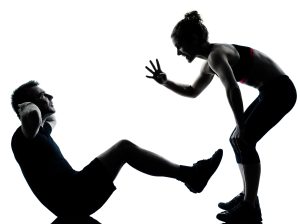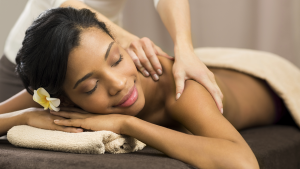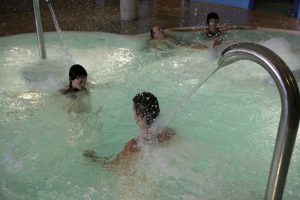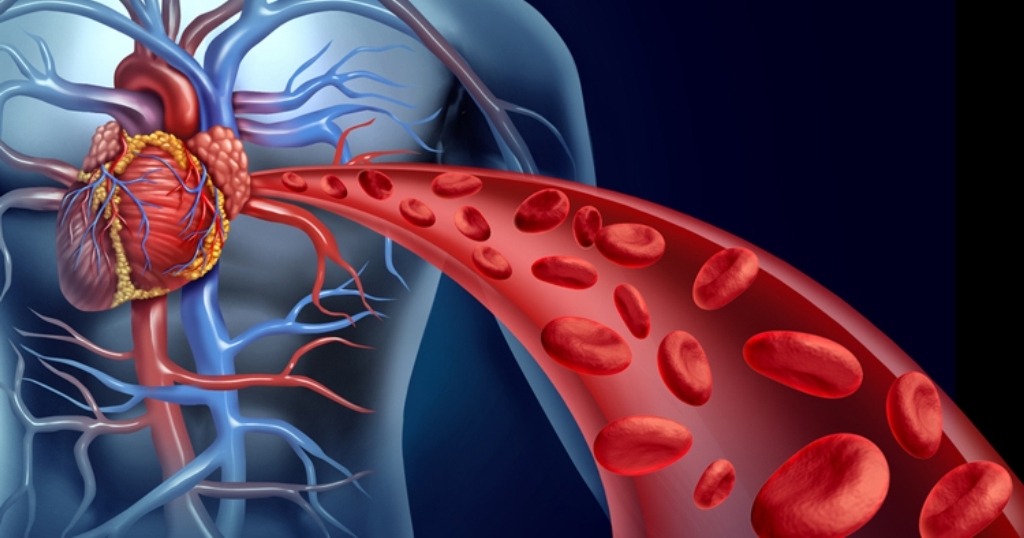What is circulation
Circulation refers to the blood’s ability to move freely throughout the body. It is “the movement of blood through the vessels of the body induced by the pumping action of the heart”.
Why is it important
Circulation is important because the blood, in particular the red blood cells, carry oxygen and nutrients throughout the body, and also remove wastes from tissues and organs. All our cells need oxygen constantly, when oxygen supply is limited as a result of poor blood circulation this could result in negative consequences such as heart problem, cognitive impairment, swollen and/or cold hands and feet.
How to improve circulation
There are a number of ways to improve circulation in the body, let explore some of these:

1. Diet
Eat foods that will nourish and feed the cells of the body; the foods that truly do this are plant-based, alkaline whole foods – primarily raw fruits and vegetables. The bulk of our diet should consist of fruits, vegetation (herbs and vegetables), nuts, seeds and whole grains, preferably alkalising grains such as quinoa and amaranth.
Foods that are highly acidic or mucus forming wreak havoc inside the body and can negatively affect our organs, increase toxicity and thicken the blood.
Aim for a daily diet of at least 80% alkaline and if you’re suffering from any health conditions then a 100% alkaline diet is necessary.

2. Exercise
Exercise at least 30 minutes every day. Exercise causes the heart rate to increase, thereby pushing blood throughout the body more vigorously and therefore increasing blood circulation. It is not necessary for one to do extreme exercises; walking, cycling or even climbing up and down stairs can yield benefits.
Consider doing some form of exercise routine, such as, daily walks, kickboxing, jogging, running, yoga or cardiovascular exercises.
Some ways you can incorporate exercise into your everyday life include:
- Parking your car a bit further from the shop, for example, so you have to walk a bit further.
- Use the stairs instead of the elevator or escalator.
- Incorporate exercise as a part of your daily household chores; dance , stretch and move while you work.
- Walk to work. If work is anywhere from 20 to 30 minutes walk, why not walk instead of driving or taking a bus or taxi.
- If you bought a trampoline (rebounder), for your children, make use of it also, jump up and down as they do.
- If you have a sedentary job, don’t sit at your desk all day. At intervals, for example, maybe every 2 hours, get up and stretch, shake your legs, your arms, move your waist or walk around for a few minutes.
- Designate at least half an hour of your day to exercising and value it as something just as important as anything else you do in your daily life, stick with it, let it become a habit.
- If you have children, especially young children, play with them, not only does it allow for some exercise time but also bonding.

3. Herbs
Herbs are natural organic vegetation that will naturally assimilate with the body, to cleanse and nourish the blood, remove obstructions and improve circulation.
Some herbs that are good for increasing blood circulation include cayenne pepper, hawthorn, ginger and gotu kola. These can be used in teas, tinctures and capsules forms.

4. Massage
Massage can be defined as the rubbing and kneading of muscles and joints of the body with the hands. There are different types of massages, including circulatory massage, which is a common method used for enhancing the flow of blood throughout the entire body, and in addition providing relaxation to the various muscles.
There are techniques involved in circulatory massage. It is however something that you and your spouse or partner can easily learn so you can have the benefit of massage, especially if you are unable to have it done professionally.
There are also do it yourself massages that will aid to increase circulation.
5. Hydrotherapy
Hydrotherapy is water therapy in which all three forms of water, that is, liquid, steam and ice are used therapeutically to initiate a healing. The goals of hydrotherapy are to improve the circulation and quality of blood.
Hot and cold waters affect the body in different ways; cold water helps to stimulate the removal of toxins from the organs and relieve inflammation, while hot water helps to reduce stress, due to it’s relaxing properties.
The benefits of hydrotherapy, chief among which is blood circulation, can be achieved through hot and cold showers.
It is not advisable to practice hydrotherapy without clean, filtered water. Tap water is usually chlorinated or contain fluoride; thus it is necessary to add some form of filtration to the shower before doing hydrotherapy.
Steps to doing hydrotherapy at home
- Get the body wet at a reasonable temperature.
- Slowly increase the heat of the water (exposing your whole body, including the top of your head) to a point you can barely stand it.
- Now turn the temperature down, to as cold as you can bear.
- Do this about seven times; starting with hot and ending with cold.
Things to avoid
- Sedentary lifestyle.
- Bad foods / Poor diet (that is, one devoid of fresh fruits and vegetables).
Conclusion
Blood circulation is extremely important to our health and wellness. Lack of proper blood flow through the body can lead to many maladies; however we can make simple lifestyle changes to improve blood circulation through the use of diet, exercise, herbs, massage and hydrotherapy.
Blood Circulation Stimulation Properties of Cayenne Pepper: A Review
 Loading...
Loading...
This article is copyrighted by Ital is Vital, 2025. Want to re-post this article? Visit our guidelines.
DISCLAIMER: THIS WEBSITE DOES NOT PROVIDE MEDICAL ADVICE
The information, including but not limited to, text, graphics, images and other material contained on this website are for informational purposes only. The purpose of this website is to promote broad consumer understanding and knowledge of various health topics. It is not intended to be a substitute for professional medical advice, diagnosis or treatment. Always seek the advice of your physician or other qualified health care provider with any questions you may have regarding a medical condition or treatment and before undertaking a new health care regimen, and never disregard professional medical advice or delay in seeking it because of something you have read on this website.
